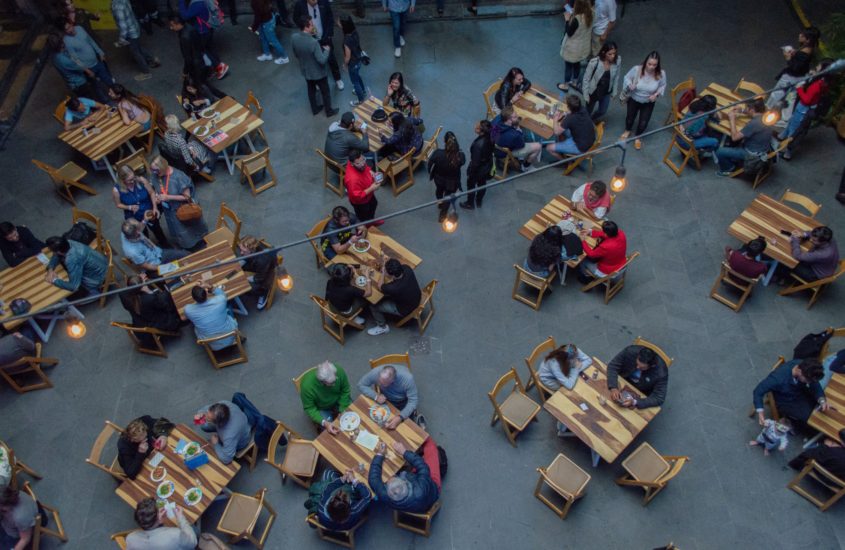What To See In Coyoacan Mexico City By: Sofia Nixon-Cervantes


When I was five and my siblings were 18, my family moved to the state of Morelos in Mexico for a year. Fortunately for us, my parents were teachers, and every thirteen years my father would take a sabbatical and travel. Thirteen years earlier, he did the same thing with my siblings. We were very fortunate to have experienced living in another country at a young age when most children wouldn’t have had the same experience. After moving back to the United States, we would return to Mexico every other summer. As I grew up, Morelos became a place where I could remember what was important to me, a place where I felt grounded, where the air smelled of rain in the summer and where brightly colored bougainvillea floated in the afternoon breeze. This was a time when I was allowed to eat all the sweet caramel, marshmallow chocolate and chili flavored candies I wanted. I drank hot chocolate and ate pan dulce (Mexican pastries) before bedtime as was the custom. It was truly my center and what defined my childhood.
Five years ago my father passed away suddenly. I was devastated and the thought of returning to Morelos became very emotionally overwhelming. However, my heart was craving that home. We opted for a trip to Coyoacan, a neighborhood in Mexico City, where Frida Kahlo lives.
Transporation:
Busses travel all over Mexico as a major form of transportation and tickets can be purchased at the airport upon arrival. The bussing system in Mexico is reliable. There are several different companies that work throughout the country and run busses at various levels of personal comfort. If you wish, you can take a bus with chickens and goats or packaged food and attendants; it all depends on where you’re going and how you want to travel. From the airport, we took a mid-level bus, similar to an airline’s business class, to Casino de la Selva bus station in Cuernavaca. We were given a drink and snack before boarding. My father-in-law was in heaven with his cacahuates japoneses (also known as cracker nuts, created by a Japanese immigrant in Mexico in the 1940s ), a staple snack in Mexico, and a cola since he has diabetes and doesn’t typically get to eat junk food. When we returned to Mexico City, we took the bus from Cuernavaca Central station to Tasqueña, the southernmost bus station.
The Neighborhood:
During the first four days of our stay in Mexico City, we stayed with a friend. She lives with her family in Coyoacan, a bohemian neighborhood in the southern section of the city that is known for its art, cultural and revolutionary history. The neighborhood is filled with brightly colored purple, yellow, and orange homes, colonial architecture, and very little traffic in comparison to the rest of Mexico City. Drawing people to this neighborhood is the Frida Kahlo Museum, also known as, La Casa Azul, el Museo Trotsky, a number of other amazing museums, the Mercado Coyoacan, theaters, cafes, and restaurants.
We spent a great deal of time here because we enjoyed the tranquility in the middle of a bustling city. Coyoacan is the same Mexico I remember when I was a kid. Life in Mexico, as in European countries, runs at a different pace than we are used to in the United States. People know how to relax and enjoy life. Balance isn’t something that one needs to work on to achieve, it’s a built-in part of the culture. Many people go back to work in the late afternoon after eating their heavy meal of the day, like our dinners, and spend their evenings going for evening strolls to the zocalos or plazas.
Our first stroll around Jardin Hidalgo, in the center of Coyoacan, transported me back to being a kid traveling around Mexico with my parents. People of all ages were out in the evening, most, like us, strolling around the zocalos or plazas and people watching. Families, couples young and old, teenagers, of every age demographic hit the center of town at night. People shop and eat Comida Corrida (not to be mistaken for fast-food). Restaurants are open, and of course, food vendors line the sidewalks with irresistible treats. Toy vendors walk around with toys hanging off wooden poles that light up, spin, or make some sort of high pitched noise, just enough to catch any toddler’s attention. Couples and singles alike line benches and kids play with the toys they convinced their parents to buy. A crowd gathered around a group of teens having a rap battle.
Since we traveled during the holidays, there were quite a few more people than the last time I visited Coyoacan. Many businesses close for the two weeks between Christmas and New Year, so many ex-pats and Mexican citizens travel throughout the country during this time. Food vendors sell elotes, or corn on the cob with crema (crème fraîche), queso cotija (dry, crumbly cheese), and chile powder sprinkled over it, and enormous buñelos, which look similar to flour tortillas but are fried and bathed in cinnamon and sugar. As a final touch, they drizzled gooey syrup on top.
Tours:
My husband is a high school history teacher and I studied Latin American history. We love learning about history and culture, so, the following day we decided to jump on a tour trolly. Tranvia Turistico is a small tour company that offers tours of Coyoacan, Condesa, and Centro three popular neighborhoods. There is also a larger tour bus company that provides day-long or multi-day hop on and hop off tours all over Mexico City. We decided to take the turibus de Coyoacan to learn more about its rich history. The bus seats about twenty people, but I think our tour had 15 riders and we were comfortable.
We were picked up at Jardin Hidalgo, in front of the main entrance to Parroquia San Juan Bautista, the Catholic church on the edge of the plaza. The tour is in Spanish and drives past a number of tourist sites in Coyoacan including Museo Leon Trotsky, Museo Frida Khalo La Casa Azul, Museo Nacional de las Artes Populares, and Viveros de Coyoacán. It ended up being a great way to see how large the neighborhood actually is and helped us plan out our museum visits in the neighborhood. Having been to La Casa Azul on a prior trip, I didn’t take time to plan ahead for a visit. If you’ve been bitten by the Frida bug and you do want to visit the museum, it’s best to purchase tickets online three or four weeks before your trip.
If you don’t purchase tickets ahead of time there are a reserved number of tickets that are sold the day of. There are no guarantees the museum will have tickets for everyone in line so if you need to purchase same-day tickets it is a good idea to be in line at 8 a.m. before the museum opens at 10 a.m. I’m not exaggerating, if you don’t plan ahead and want to get in, you will have to be there at 8 in the morning! We passed by on our way to the Mercado de Artesania one morning and the line was around the block. There were so many people walking around looking at the house from the outside and taking pictures that we had to walk in the middle of the street just to get past them. Vendors outside the museum sell water and a variety of snacks, most of which you can find a few blocks away for several pesos less.
After our tour, we built up such an appetite and decided it was time to get something to eat. My plan for this trip was to eat street food as much as possible. It’s cheap and delicious! My family preferred to sit and have a meal so I had to concede and find someplace we could all sit and relax. I suppose I can cut my husband and my son some slack since we did average five miles a day. My 76-year-old father-in-law never lets on to being tired so I took that into consideration too.
Food:
We ended up walking along Calle Caballocalco past the back of Parroquia San Juan Bautista, where the street is lined by restaurants catered to tourists. We chose Centro Botanero Coyo because it was the one furthest from the crowds and noise, and we were not disappointed. We started our meal with drinks. My husband and his dad ordered mezcal that came with orange slices and chapulines (chile–covered-grasshoppers). I ordered a tamarindo mezcal which I thought was going to be a mixed drink, but instead was a blended iced drink served in chile and salt-rimmed martini glass.
In the spring of 2019, Mexico City banned single-use plastic items and Centro Botanero Coyo decided to get a head start on the late 2020 effective date. However, they hadn’t figured out a substitute yet, so my iced drink had to melt a little before I could enjoy it. The tangy sweetness of the tamarindo (tamarind) was still delicious all the same, so I ordered a second! We were given chicharrones (fried pork rinds/ cracklings) and three different salsas for dipping, in addition, we ordered guacamole and tortillas (no, not chips) as an appetizer.
Not only did we enjoy the food and drinks, but the chill and laid-back environment of the restaurant and staff allowed us to take our time and enjoy one another’s company. The food was flavorful and savory while the spices and heat were not dialed down like you might find in a restaurant catering to American tourists. The chile hit all the spicy notes and paired well with the handmade tortillas and the mole. My son who practically refused to eat anything other than caldos (soups) even said that they tasted more authentic than what we make at home.
All in all, Coyoacan is a must-see destination when visiting Mexico City, it is such a unique niche of the city.




Jose A Andrade
I travelled to Mexico City for the first time in November 2019. I did not get to see as much of Coyoacàn as the author describes with such a lively voice. I was already very much looking forward to return to CDMX and explore more of Coyoacàn but the author makes me feel like I should begin planning my return now (or once concerns over Covid-19 greatly diminish).